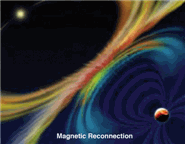Missions & Projects
Featured
Alphabetical
By Last Name:
Displaying records 1 to 24 of 50.
Show:
ACE Cosmic Ray Isotope Spectrometer (CRIS)
The Cosmic Ray Isotope Spectrometer (CRIS) measures the abundances of galactic cosmic ray isotopes.
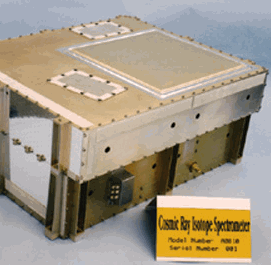
ACE Solar Isotope Spectrometer (SIS)
The Solar Isotope Spectrometer provides isotopically resolved measurements of the elements from lithium to zinc over the energy range 10 - 100 MeV/nucleon. The SIS dectector system consists of two identical telescopes composed of stacks of large-area solid-state detectors.
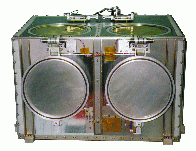
Advanced Composition Explorer (ACE)
The Advanced Composition Explorer (ACE) studies energetic particles from the sun as well as sources within and outside our galaxy. ACE observations contribute to our understanding of the formation and evolution of the solar system as well as the astrophysical processes involved. NASA's Goddard Space Flight Center provided detectors and telescopes for several of ACE's instruments. The mission launched in 1997.
Key Staff
- Project Scientist: Tycho Von Rosenvinge
- Deputy Project Scientist: Eric Christian
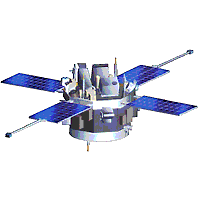
Aeronomy of Ice in the Mesosphere (AIM)
The AIM satellite mission is designed to explore Polar Mesospheric Clouds (PMCs), also called noctilucent clouds, to find out why they form and why they are changing.
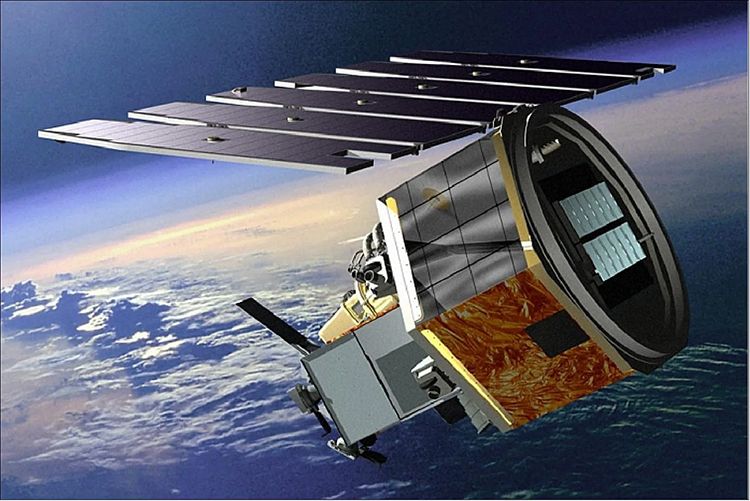
C/NOFS Coupled Ion Neutral Dynamic Investigation (CINDI)
CINDI involves two instruments on the C/NOFS satellite that measure the concentration and kinetic energy of the ions and neutral particles in space as the satellite passes through them. This information will be used in building models to understand the various structures in the ionosphere, such as plasma depletions and associated turbulence in the nightside, low-latitude ionosphere. These structures can interfere with radio signals between Earth and spacecraft in orbit, thus causing errors in tracking and loss of communication.
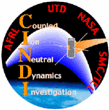
C/NOFS Vector Electric Field Instrument (VEFI)
VEFI measures direct current (DC) electric fields, which cause the bulk plasma motion that drives the ionospheric plasma to be unstable. Additionally, it measures the quasi-DC electric fields within the plasma density depletions to reveal the motions of the depletions relative to the background ionosphere. VEFI also measures the vector AC electric field, which characterizes the ionospheric disturbances associated with spread-F irregularities.
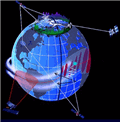
Cluster
The NASA/European Space Agency (ESA) Cluster mission was the first to deploy four identical spacecraft flying in formation to conduct three-dimensional studies of the interaction between Earth's magnetosphere and the "solar wind" of charged particles streaming off the sun. Science output from Cluster greatly advances our knowledge of space plasma physics, space weather, and the sun-Earth connection, and has been key in improving the modeling of the magnetosphere and understanding its various physical processes. The quartet of spacecraft went into orbit in two launches, in July and August 2000.

Cluster Plasma Electron And Current Experiment (PEACE)
A Plasma Electron And Current Experiment instrument can measure the three dimensional velocity distribution of electrons in a space plasma, for an energy range from a few electronvolts to about 30 kiloelectronvolts. A PEACE instrument is flying on each of the four Cluster II spacecraft, which were launched in the summer of 2000.
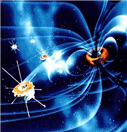
Community Coordinated Modeling Center (CCMC)
The Community Coordinated Modeling Center (CCMC) is a multi-agency partnership to enable, support, and perform the research and development for next-generation space science and space weather computer models. The CCMC partners include NASA; the National Science Foundation; the NOAA Space Weather Prediction Center; the Office of Naval Research; and the Air Force Materiel Command, Office of Scientific Research, Research Laboratory, and Weather Agency.
Key Staff
- Educational Activity Coordinator: Elana Resnick
- Deputy Project Scientist: M. Mays (Markus) (she/her)

Cusp Plasma Imaging Detector (CuPID)
The CuPID (Cusp Plasma Imaging Detector) Cubesat Observatory is designed to test competing models of solar wind-magnetosphere coupling. The 6U spacecraft is roughly the size of a toaster oven and will carry a wide field-of-view soft X-ray telescope, the first of its kind to be placed into orbit. In orbit the spacecraft will measure soft X-rays emitted from the process of charge-exchange when plasma from the solar wind collides with neutral atoms in the Earth’s distant atmosphere. The spatial and temporal patterns of X-ray images will be used to address scientific questions. The project is a collaboration between Boston University, NASA Goddard Space Flight Center, Johns Hopkins University, Merrimack College, Aerospace Corporation, Drexel University, and the University of Alaska, Fairbanks.
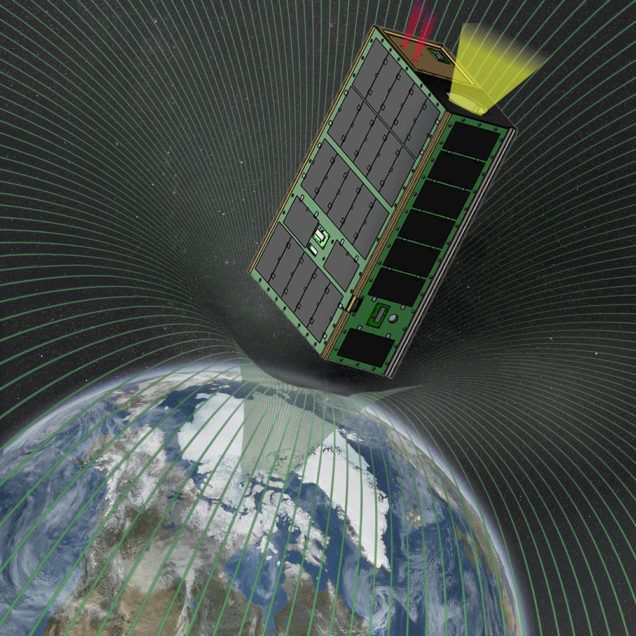
Deep Space Climate Observatory (DSCOVR)
DSCOVR, formerly called Triana, is the first Earth-observing satellite in an Lagrange-1 or L1 orbit. It supports a number of scientific instruments, including EPIC and NISTAR. EPIC (Earth Polychromatic Imaging Camera) is a 10-channel sepctroradiometer that provides daily 13 (in winter) or 22 (in summer) 10 narrow band spectral images of the entire sunlit face of Earth.
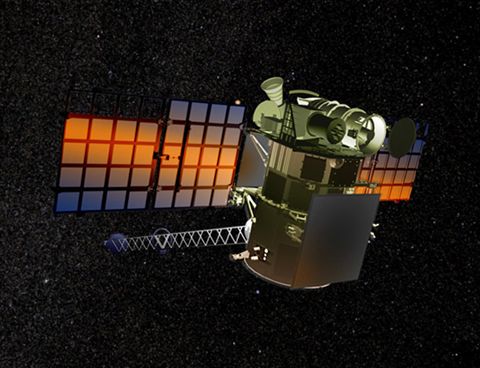
Global-scale Observations of the Limb and Disk (GOLD)
The Global-scale Observations of the Limb and Disk (GOLD) mission of opportunity is an imaging instrument that is on a commercial communications satellite in geostationary orbit to image the Earth's thermosphere and ionosphere. GOLD was launched in January 2018.
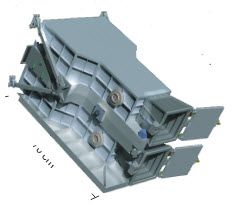
HINODE
Hinode, formerly known as Solar-B, is a satellite equipped with three advanced solar telescopes to explore the magnetic fields of the sun. The spacecraft's solar optical telescope (SOT), X-ray telescope, and EUV imaging spectrometer were designed to study the heating mechanism and dynamics of the extended solar atmosphere (corona). The observations will improve understanding of the mechanisms that power the corona and drive solar eruptions. Hinode was launched in 2006.

HINODE Extreme-ultraviolet Imaging Spectrometer (EIS)
EIS will provide monochromatic images of the transition region and corona at high cadence using a slot. High spectral resolution images can be obtained by rastering with a slit.
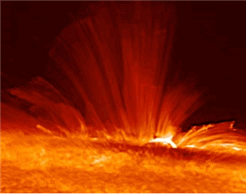
Interface Region Imaging Spectrograph (IRIS)
Interface Region Imaging Spectrograph (IRIS) fills a crucial gap in NASA's ability to advance Sun-Earth connection studies.
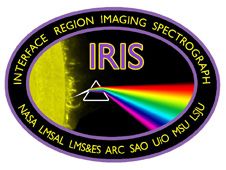
Interstellar Boundary EXplorer (IBEX)
IBEX is the first mission designed to map the entire boundary region at the edge of the solar system. As electrically charged particles from the sun (the solar wind) flow outward beyond the orbits of the planets, they collide with the material between the stars -- the interstellar medium, or ISM. These interactions create energetic neutral atoms (ENAs), fast-moving particles with no charge. This region emits no light that can be collected by conventional telescopes, so IBEX, measures the ENAs that happen to be traveling inward from the boundary. IBEX's sole science objective is to discover the nature of the interactions between the solar wind and the interstellar medium at the edge of our solar system. The mission launched in 2008.
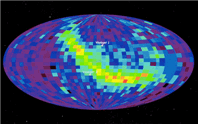
Ionospheric Connection Explorer (ICON)
ICON will explore the boundary between Earth and space – the ionosphere – to understand the physical connection between our world and the immediate space environment around us.
Juno
The Juno spacecraft successfully entered the orbit of Jupiter on July 4, 2016. Its suite of instruments allow it, for the first time, to peer below the dense cover of clouds to answer questions about the gas giant and the origins of our solar system. Juno's primary goal is to reveal the story of Jupiter's formation and evolution. Using long-proven technologies on a spinning spacecraft placed in an elliptical polar orbit, Juno observes Jupiter's gravity and magnetic fields, atmospheric dynamics and composition, and evolution.
Key Staff
- Participating Scientist: Sander Goossens
- Co Investigator: Katherine Garcia-Sage
- Co Investigator: John Connerney
- Co Investigator: Gordon Bjoraker
- Co Investigator: Weijia Kuang
Instruments
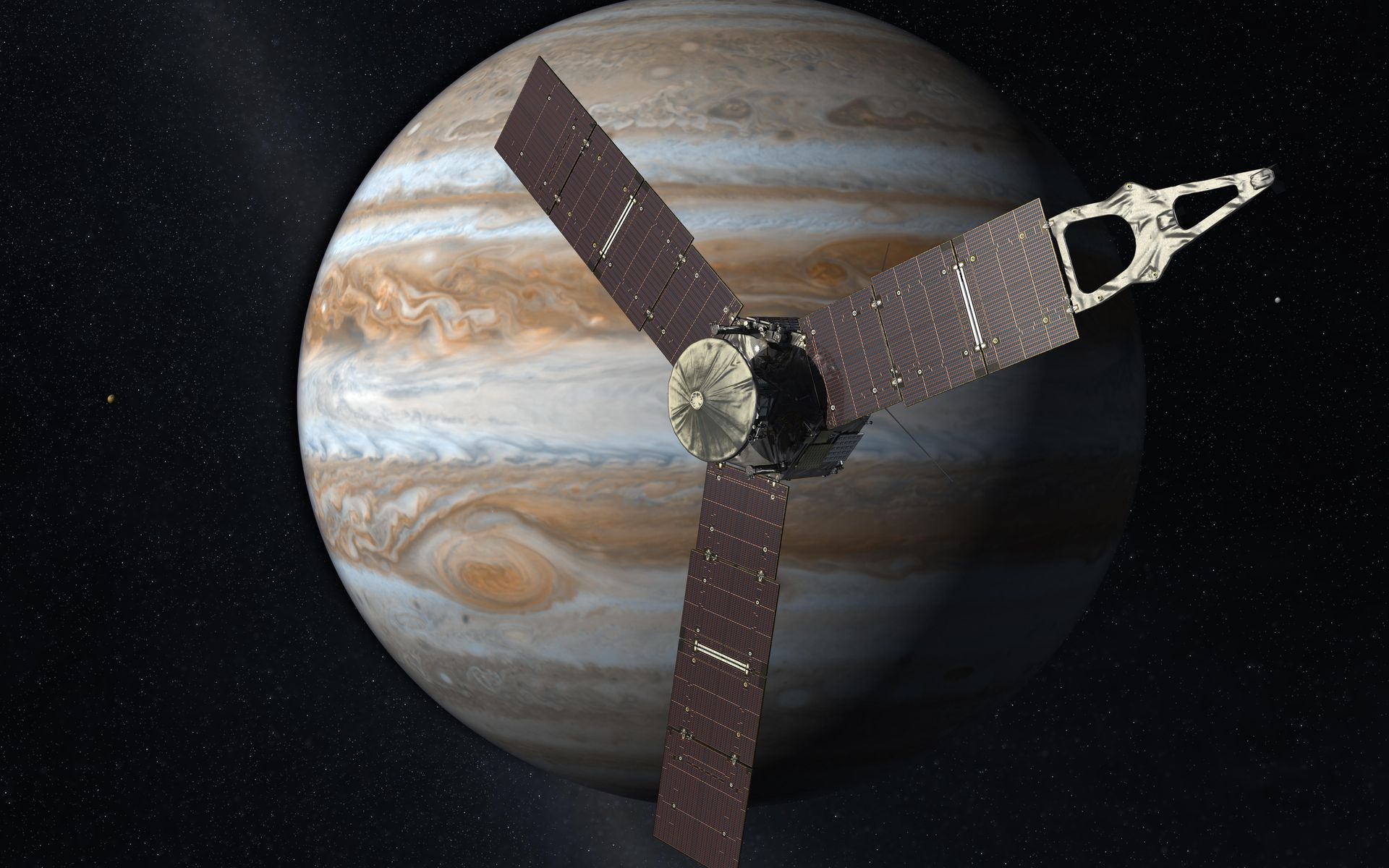
Living With a Star Program (LWS)
The Living With a Star program emphasizes the science necessary to improve our understanding of how and why the sun varies; how Earth and the solar system respond; and how the variability and response affect humanity in space and on Earth. One of the program's key goals is to improve our ability to forecast geomagnetic storms and other forms of stormy "space weather." Such events can interrupt or damage satellite communications systems, trigger surges in power grid systems, and increase radiation hazards to orbiting astronauts and spacecraft.

Magnetospheric Multiscale Satellites (MMS)
MMS consists of four identical spacecraft that orbit around Earth through the dynamic magnetic system surrounding our planet to study a little-understood phenomenon called magnetic reconnection. Magnetic reconnection is a fundamental process that happens in space, which powers a wide variety of events, from giant explosions on the sun to green-blue auroras shimmering in the night sky.
Key Staff
- Science Co-Investigator: Thomas Moore
- Deputy Project Scientist: Mark Adrian
- Deputy Project Scientist: Guan Le
Instruments
